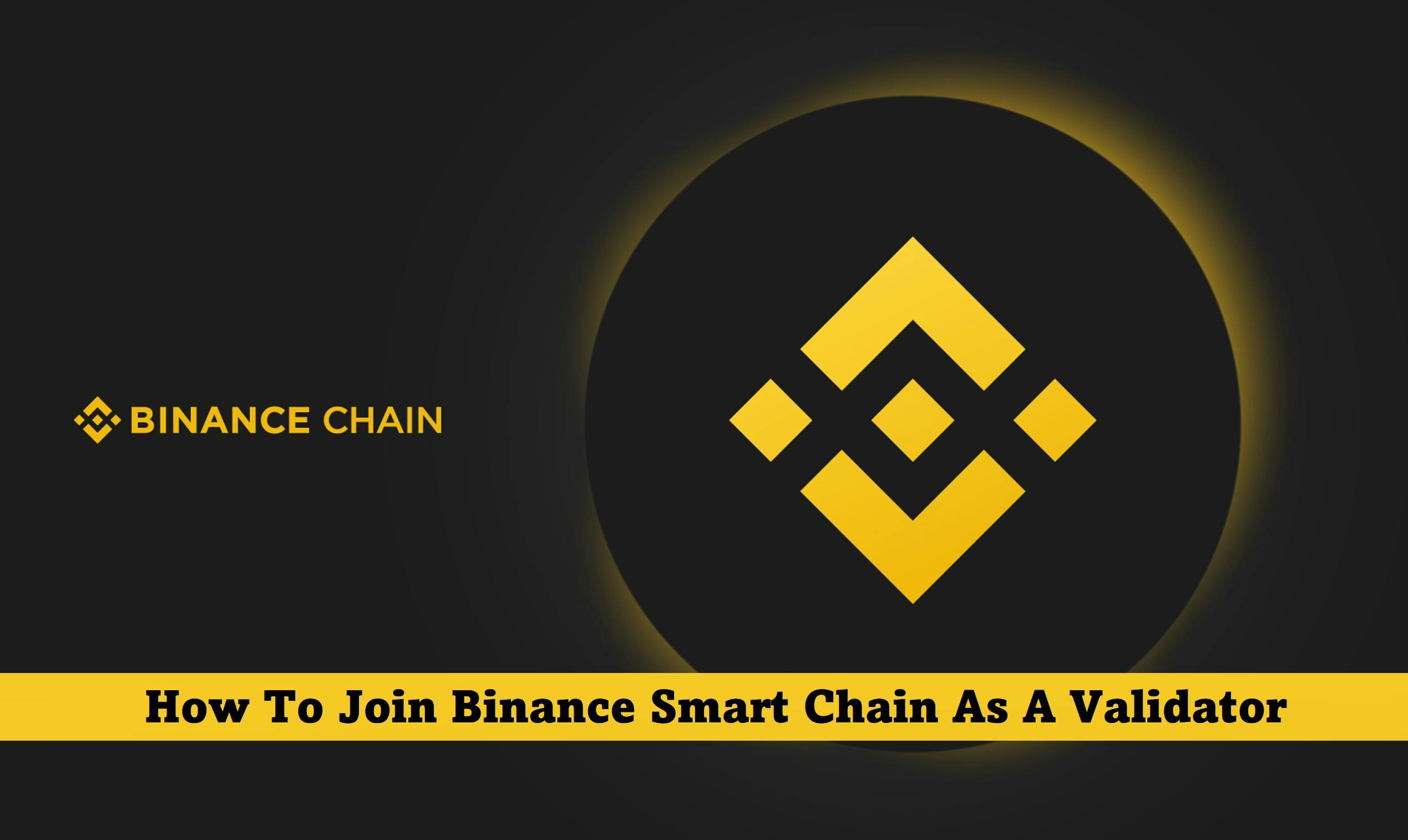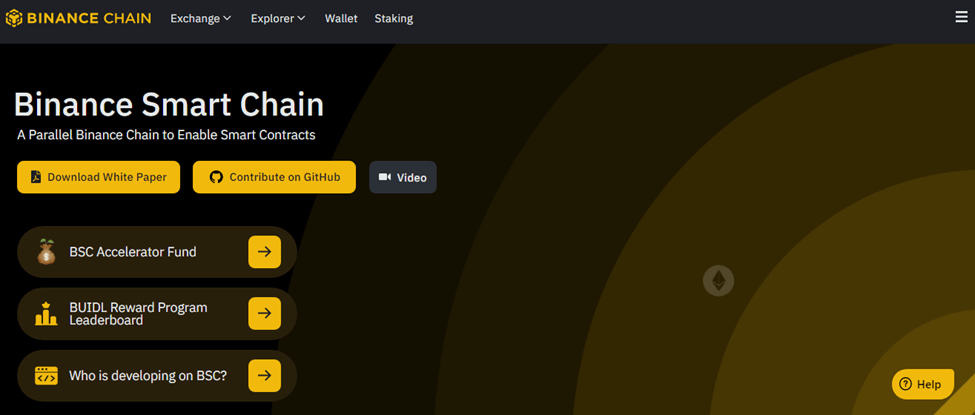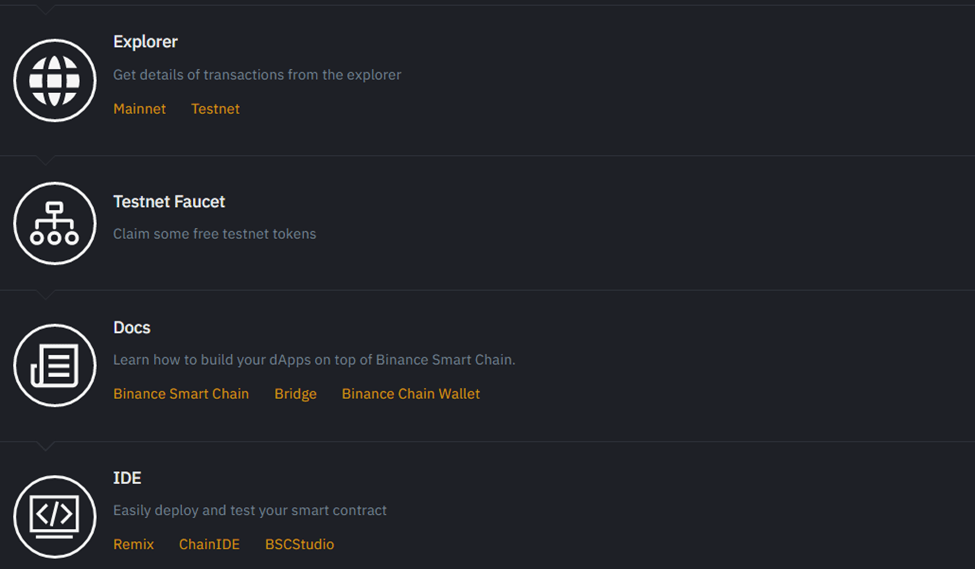
Decentralized finance has been buzzing for some time now, thanks to new initiatives emerging that have been giving investors capitalizing on the trend to make as much as they can from the decentralized finance money market.
In the past, Ethereum was the go-to platform for creators of decentralized apps, as it was one of the existing blockchains, but due to the increasing transaction costs and network congestion, developers migrated to the Binance Smart Chain.

Key Takeaways
• The Ethereum blockchain was previously used by many developers, but recently the Binance Smart Chain has taken over the scene with its fast network and very low transaction fees.
• Becoming a Binance Smart Chain validator requires that you follow some specific steps and procedures before you can be considered by the chain.
• The Binance Smart Chain has 21 validators that get reshuffled depending on the top nodes needed for validation slots to be competitive.
SEE ALSO: How to Withdraw from Binance Smart Chain Faucets
SEE ALSO: How to Use Binance Smart Chain Faucets
The Binance Smart Chain offers very low transaction fees and also supports Ethereum virtual machines, making it an excellent choice as developers have confirmed that it offers a better experience than the previously used Ethereum blockchain.
Blockchain validators, on the other hand, are the components that validate and confirm transaction data before it is added to the distributed ledger of the blockchain.
They scrutinize each transaction to ensure its accuracy and lack of harmful intent, and they are required for all blockchains, as if validators fail to perform their roles, the network will cease to function optimally.
Moving on, the Binance Smart Chain has its own validators that process and validate Binance Smart Chain transactions.
They verify the legality and legitimacy of all incoming data and authorize all transactions, as, without their authorization, such transactions will not be executed on the Binance Smart Chain.
The Binance Smart Chain has a total of twenty-one (21) validators. Validators are re-selected every day based on the top 21 nodes that match the needed requirements for validation slots to be competitive.
An individual, institution, or community group can become a Binance Smart Chain validator if they meet the standards outlined below:

Steps to Become a Binance Smart Chain Validator
The first thing you need to do before sending in your application is to choose your validator hardware.
Ensure that it has:
1. A virtual private server running recent versions of Mac OS X or Linux.
2. 2T GB of free disk space, solid-state drive (SSD), gp3, 8k IOPS, 250MB/S throughput, and read latency <1ms.
3. 12 cores of CPU and 48 gigabytes of memory (RAM).
4. Suggest m5zn.3xlarge instance type on AWS, or c2-standard-8 on Google cloud.
5. A broadband Internet connection with upload/download speeds of 10 megabytes per second.
Setup a Validator Node at Testnet
Keep in mind that if you are running a node in Testnet, 2CPU/8GB of RAM is sufficient.
Install BSC Full node
You can download the pre-build binaries from the release page or follow the instructions here to set up a full node.
Download the config files
Download genesis.json and config.toml by:
“## testnetwget –no-check-certificate $(curl -s https://api.github.com/repos/binance-chain/bsc/releases/latest |grep browser_ |grep testnet |cut -d\” -f4)unzip testnet.zip”
Launch your node and wait for it to get synced.
Create a Consensus Key
You need to create an account that represents a validator’s consensus key. Use the following command to create a new account and set a password for that account:
“geth account new –datadir ./node”
SEE ALSO: How to Connect Binance Smart Chain Extension to Trust Wallet
SEE ALSO: How to Connect Binance Smart Chain to MetaMask
Start Validator Node by using the command below:
“echo {your-password} > password.txt
geth –config ./config.toml –datadir ./node –syncmode snap -unlock {your-validator-address} –password password.txt –mine –allow-insecure-unlock –cache 18000”
Make sure that you don’t expose your RPC endpoints to the public network.
Get Testnet Token from Faucet
You can get testnet BNB from here, but the BNB is on Binance Smart Chain.
Download tbnbcli from GitHub and use tbnbcli to create an account or recover an account.
You can follow the guide to transfer BNB from BSC testnet to BC testnet.
Declare Your Candidacy
Use tbnbcli to create an account or recover an account, make sure the account gets more than 10000 BNB.
Before sending create-validator transaction, make sure your bsc validator have already catched up.
Example on Testnet
tbnbcli staking bsc-create-validator \
–side-cons-addr {validator address} \
–side-fee-addr {wallet address on BSC} \
–address-delegator {wallet address on BC} \
–side-chain-id chapel \
–amount 10000000000:BNB \
–commission-rate {10000000 represent 10%} \
–commission-max-rate {20000000 represent 20%} \
–commission-max-change-rate {10000000 represent 1%} \
–moniker {validator name} \
–details {validator detailed description} \
–identity {keybase identity} \
–website {website for validator} \
–from {key name} \
–chain-id Binance-Chain-Ganges \
–node=http://data-seed-pre-1-s3.binance.org:80
Then you go to explorer to verify your transactions and then check your validator’s status on this page to confirm that you have now joined the Binance Smart Chain as a validator.
SEE ALSO: How To Buy VeChain On Binance
SEE ALSO: Compare Fees Coinbase Vs. Binance
Frequently Asked Questions (FAQs)
What is the relationship between Binance Smart Chain and BEP20?
Binance Smart Chain’s token standard is BEP20. It is comparable to Ethereum’s ERC20 standard in many aspects, but it also expands on it in others.
BNB, like Ethereum, pays for transactions involving BEP20 tokens on the Binance Smart Chain network.
What is the difference between BEP20 and ERC20?
BEP20 tokens operate on the Binance chain, whereas ERC20 tokens operate on the Ethereum chain. Binance tokens were first published as ERC tokens on the Ether chain, so they function and behave exactly similarly.
Final Thoughts
The Binance Smart Chain is very reliable, and as such, it comes as no surprise that investors are interested in becoming Binance Smart Chain validators.
If you happen to be interested in becoming one yourself, simply follow the steps outlined in this article as they will serve as a guide towards becoming one.
Read More




